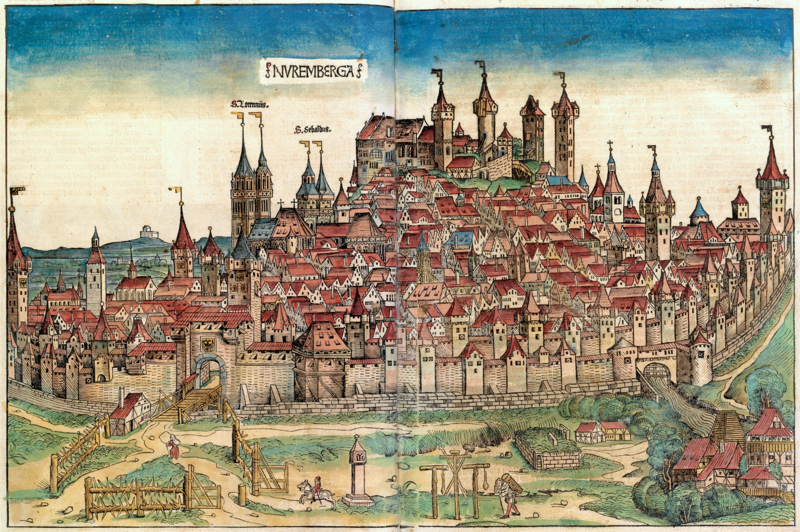Being an Artist
The Nuremberg chronicle (1493): A pictorial odyssey through Time
Introduction
The Nuremberg Chronicle, also known as the Liber Chronicarum in Latin, stands as a testament to the fascinating intersection of art, technology, and historical documentation in the late 15th century. Published in 1493 by Hartmann Schedel, a Nuremberg physician and humanist, this remarkable tome is celebrated as one of the earliest printed books with woodcut illustrations, offering readers a visual journey through the history of the world. This article explores the significance of The Nuremberg Chronicle, its historical context, and the pioneering role it played in the development of printed books and visual storytelling.
 Evening Downpour. Martin Leighton
Evening Downpour. Martin Leighton
The historical context
In the 15th century, the invention of the printing press revolutionized the way information was disseminated. Johannes Gutenberg's invention, around 1440, paved the way for the mass production of books, making knowledge more accessible than ever before. Nuremberg, a thriving city in Germany, became a center for printing and publishing during this period. In this cultural and intellectual milieu, Hartmann Schedel conceived the idea of compiling a comprehensive chronicle that would encapsulate the history of the world.
Schedel collaborated with the accomplished woodcut artist Michael Wolgemut and his apprentice Wilhelm Pleydenwurff to bring his vision to life. The resulting masterpiece, The Nuremberg Chronicle, seamlessly blended text and imagery, creating a groundbreaking work that bridged the gap between traditional manuscript illumination and the emerging world of print.
The printing process and woodcut illustrations
The Nuremberg Chronicle was printed by Anton Koberger, one of the most successful and prolific printers of the time. The printing process involved movable metal type, allowing for the efficient reproduction of text. However, it was the woodcut illustrations that truly distinguished this work. The Chronicle featured over 1,800 intricate woodcuts, capturing scenes from biblical stories, classical history, and contemporary events.
The woodcuts were an integral part of the narrative, providing readers with a rich visual experience. They were not mere embellishments but served to enhance the understanding of the text. The artists skillfully depicted cities, landscapes, and historical events, offering a unique window into the cultural and social milieu of the 15th century.
A visual journey through time
The Nuremberg Chronicle is organized in a chronological manner, tracing the history of the world from the biblical creation to the contemporary period. The first part of the book is dedicated to biblical history, with detailed woodcuts illustrating stories from the Old and New Testaments. The second part explores the history of the classical world, featuring depictions of renowned figures such as Alexander the Great and Julius Caesar.
The third and final part of the Chronicle is a comprehensive history of European cities, including Nuremberg itself. The woodcuts of cities are particularly noteworthy, offering a fascinating glimpse into urban life during the late Middle Ages. These illustrations are not only historically informative but also provide valuable insights into the artistic and architectural styles of the time.
Legacy and influence
The Nuremberg Chronicle had a profound impact on the dissemination of knowledge and the development of printed books. Its success marked a shift in the perception of books from utilitarian objects to items of cultural and artistic value. The Chronicle's visual storytelling approach laid the foundation for future illustrated publications, influencing subsequent generations of artists and printers.
The woodcut illustrations, with their meticulous details and narrative depth, set a standard for the integration of text and image in books. The Chronicle became a collector's item and a symbol of prestige, contributing to the popularization of printed books as both educational tools and works of art.
 The Nuremberg Chronicle. Source: Wikipedia
The Nuremberg Chronicle. Source: Wikipedia